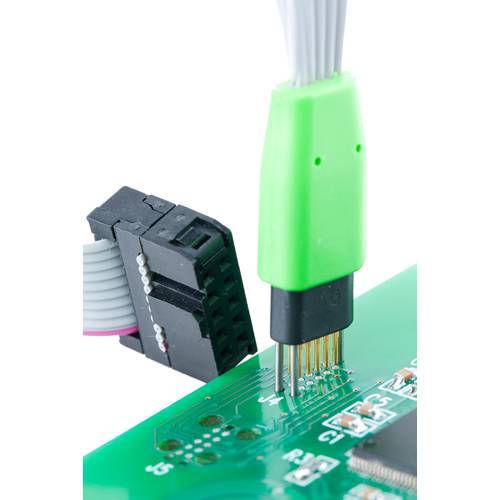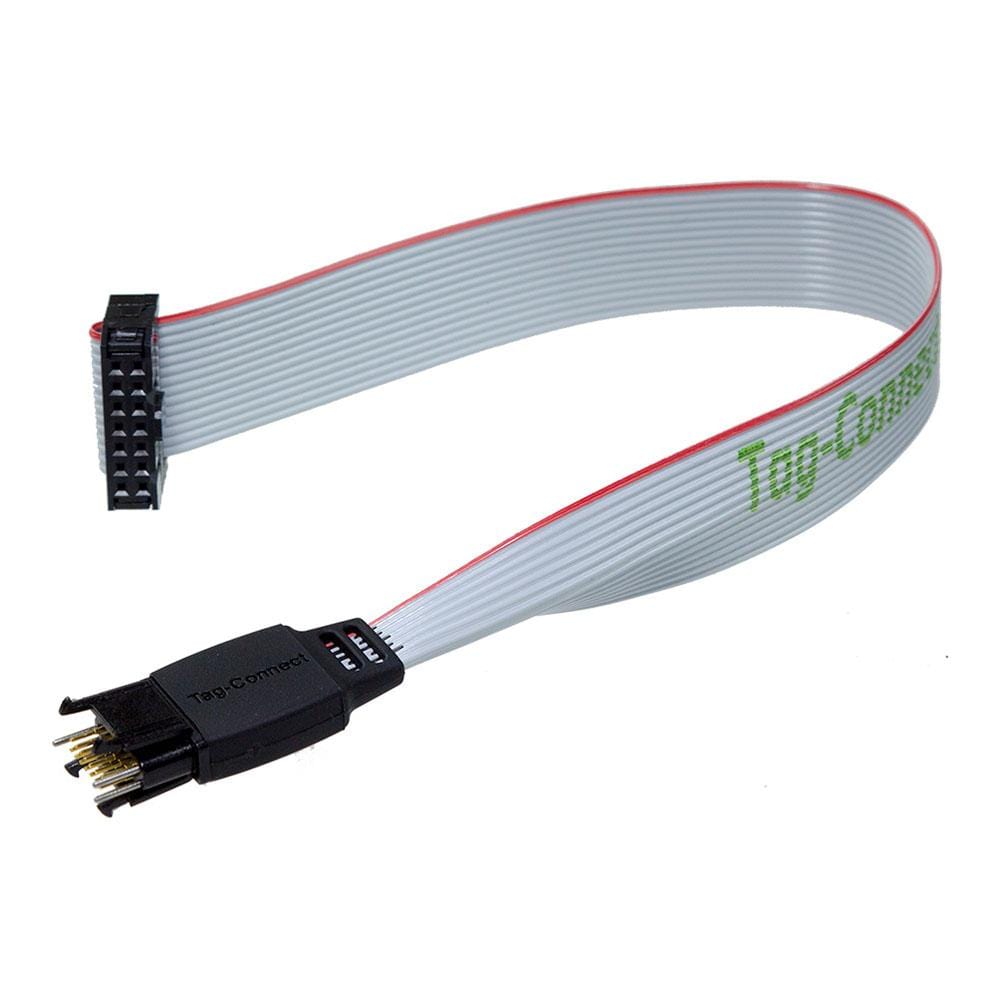

Key Features
Overview
The Tag-Connect TC2070-IDC is a 14-pin Plug-of-Nails™ programming/debug cable with integral alignment legs. It mates directly to a small PCB footprint—no mating header is required—then presents a 2×7 (0.1″) IDC female at the tool end for use with standard 14-pin JTAG connectors and adapters. A short ribbon section (≈200 mm) links the pogo-pin “plug” to the IDC.
Where It Fits
The TC2070 family is commonly used with MSP430, DSPs and other MCUs that expose a 14-pin JTAG/ST-14 interface. If you need the same footprint without the hands-free legs, choose the TC2070-IDC-NL. For ST’s 0.05″ STDC14 ecosystem, see the 0.05″ version TC2070-IDC-050. If you only require SWD on a tiny 6-pin footprint, consider the Cortex-specific TC2030-CTX-NL-STDC14.
Why Consider This Cable?
Compared with fitting a header on every PCB, Tag-Connect eliminates the target-side connector, saving board area and per-unit BOM cost while providing a robust spring-pin interface suitable for development and production. Engineers also value the keyed, repeatable connection and the availability of legged/no-legs variants and accessories for fixtures.
Downloads
Why Engineers Choose The Tag-Connect TC2070-IDC 14-Pin Plug-of-Nails™ IDC Cable
Eliminate Target Headers
Fast, Stable Connection
Works With Existing Tools
| General Information | |
|---|---|
Part Number (SKU) |
TC2070-IDC
|
Manufacturer |
|
| Physical and Mechanical | |
Weight |
0.1 kg
|
| Other | |
EAN |
5055383698783
|
Frequently Asked Questions
Have a Question?
-
What if I only need SWD on a tiny footprint?
Use a 6-pin Cortex solution such as TC2030-CTX-NL-STDC14 to shrink your pads while staying compatible with STDC14 tools.
-
Is there a 2 mm IDC option?
Yes—the TC2070 series includes 2 mm IDC variants; contact Debug Store for availability or see other TC2070 listings in our catalogue.
-
Can I program in production without holding the cable?
Yes. Use the legged cable for bench work, or pair a no-legs cable with a retainer/mount in a fixture for hands-free production steps.
-
How is this better than fitting a 2×7 header?
No connector on the target saves cost and board area, avoids tall components, and removes a placement step—useful in compact or sealed products.
-
Will it damage my PCB pads?
Spring-pins are designed for repeated cycles on ENIG/OSP pads. Use the legged version for stable pressure; for fixtures, the no-legs cable plus a retainer works well.
-
How big is the footprint and what about keep-outs?
The TC2070 family uses a very small pad pattern with two or three tooling holes; follow the Tag-Connect footprint drawing for pad/NPTH sizing and keep-outs.
-
Does the TC2070-IDC support full 14-pin JTAG?
Yes, its 14 pogo pins map to the 2×7 IDC end for legacy ARM-14/TI-14 style workflows. For UART alongside SWD, the 0.05″ STDC14 path can also expose TX/RX.
-
I’m designing for ST’s ST-Link V3 (STDC14). Which cable?
Use the 0.05″ option TC2070-IDC-050 or consider the compact SWD-only TC2030-CTX-NL-STDC14 to shrink your PCB footprint.
-
When should I choose the no-legs version?
Use the TC2070-IDC-NL if you mount the cable in a fixture or prefer manual pressure without latching legs.
-
What is “Plug-of-Nails™” and why use it?
A spring-pin plug lands on a tiny PCB footprint, so you don’t fit a header on each board. It saves area and per-unit cost while remaining robust for repeated use.


